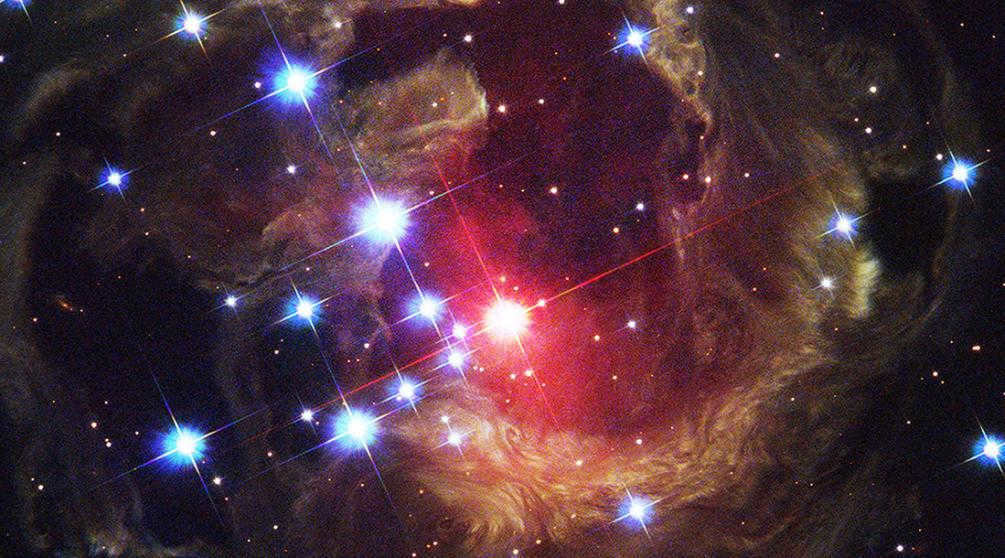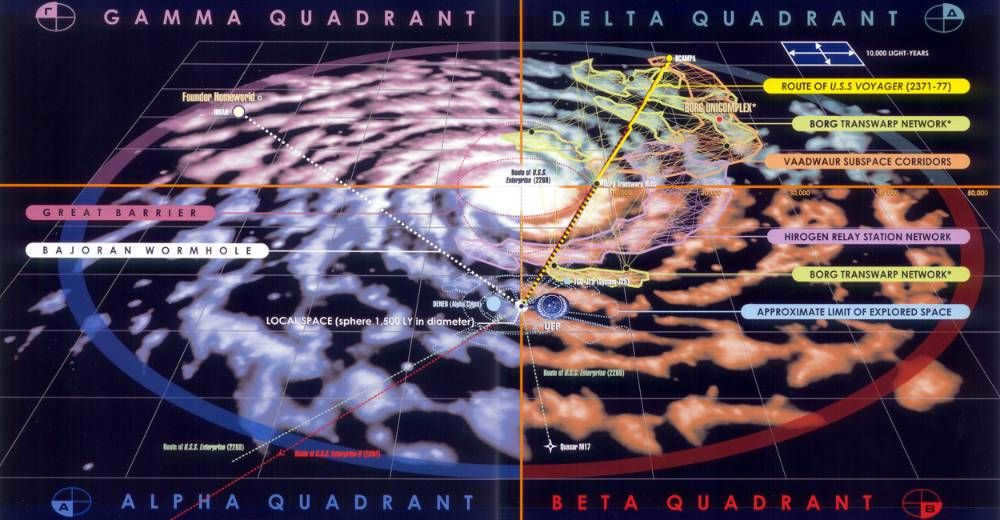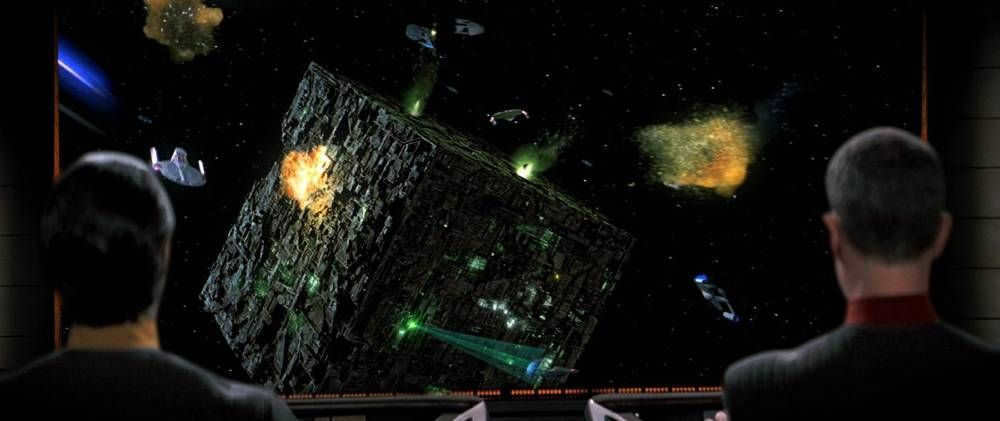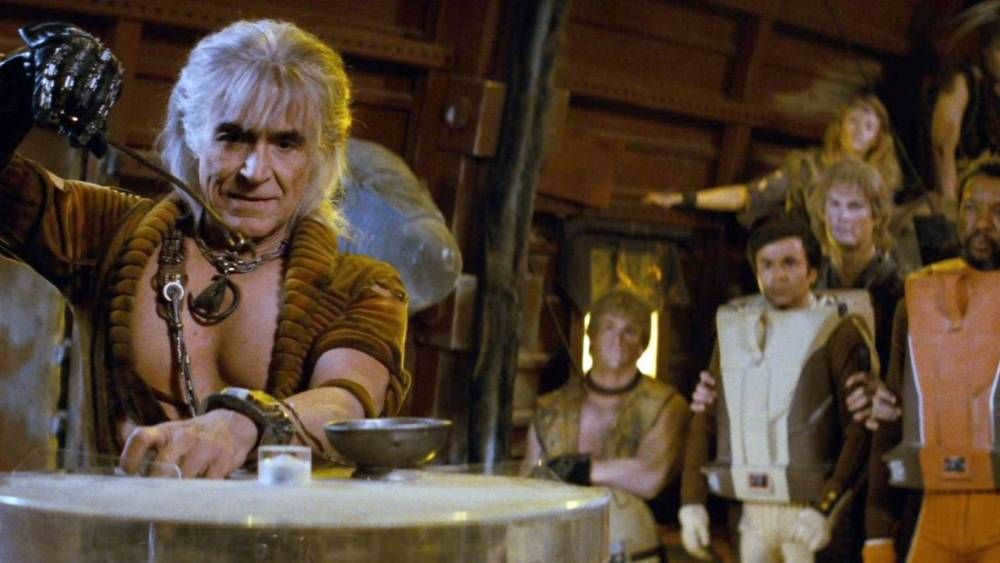Embark on a journey to the International Space Station (ISS) and delve into the captivating world of astronauts. Traverse through the vast expanse of our solar system, marvel at the breathtaking visuals captured by the Hubble Space Telescope, and embark on an exhilarating quest to unravel the enigmatic secrets hidden within the universe. Join us on this thrilling expedition!

There is a wide range of BBC documentaries and series dedicated to the topic of space, all of which are hosted by the renowned physicist and science popularizer, Professor Brian Cox. These shows have consistently maintained a high level of quality, as confirmed by our own viewing experiences. However, for this particular selection, we have chosen to focus on the most recent series titled “Planets” (specifically, the British version). As the name suggests, this series delves into the various planets within our solar system. Professor Cox explores the achievements of Earth’s inhabitants in their exploration and understanding of these celestial bodies. Throughout the five episodes, viewers are treated to unique images and videos captured by spacecraft, while Professor Cox provides clear and accessible explanations. For example, he discusses the origins and characteristics of the aurora borealis, detailing which planets it occurs on, as well as the distinctions between the rings of Jupiter and Saturn. Furthermore, the series delves into the intriguing possibility of extraterrestrial life on Europa, one of Jupiter’s moons, which is a topic that scientists are actively researching.

If you’re still craving more of Pluto and its frigid core after watching “Planets,” then you should definitely watch the movie “Pluto: First Encounter” (2015). This film delves deeper into the mysteries of Pluto, Charon, and NASA’s New Horizons program.
For all you Doctor Who fans out there, here’s an interesting tidbit: Brian Cox gives a lecture called “Science in Doctor Who,” where he discusses the concepts of space and time as portrayed in the show and in real life.
Once again, the BBC brings us a fascinating insight into the training methods used for astronauts in Star City. It’s not just about the centrifuge and hydrolab, there’s a whole lot more to it. Interestingly, back in 2017, British astronaut Tim Peake posed a challenging logic problem from the training course that left the internet stumped:
Imagine you are faced with a cube. This cube can be rotated in different directions – left, right, forward (towards you), or backward (away from you). On the bottom edge of the cube, there is a dot. Now, mentally rotate the cube in the following sequence: forward, left, left, forward, right, backward, right. Where will the dot be located?
If the topic interests you, we suggest reading or listening to the book “Can You Hammer a Nail in Space and Other Questions About Cosmonautics” by Russian cosmonaut Sergey Ryazansky. It’s a fascinating read.
*The answer you’re looking for is located at the bottom.
The cosmonauts’ preparation for flight has already been detailed, and Konstantin Murashev’s documentary “Earth in the Porthole” actually focuses on life aboard the International Space Station. The film captures the otherworldly existence and work of astronauts during their six-month stay on the station. Why do astronauts have to secure their sleeping bags and “strap themselves in” before going to bed on the ISS? How do they wash their heads in zero gravity? How many sunsets and sunrises do ISS astronauts witness in a single day? These questions are answered by the astronauts themselves, who also demonstrate the solutions. It must be said that after watching “Earth in the Porthole,” one gains a new appreciation for gravity.
The documentary series “Space: space and time” consisting of 13 episodes was released in 2014 and has quickly gained recognition as a groundbreaking work in the field of science-pop. One of the key factors contributing to its success is the presence of the extraordinary Neil Degrasse Tyson, an astrophysicist and passionate visionary who has a remarkable ability to discuss complex concepts of physical cosmology in a relatable and engaging manner, showcasing his deep passion for scientific exploration – a talent that is truly rare. Additionally, the series delves into important and intriguing cosmic subjects ranging from the origins of the universe with the Big Bang theory to the enigmatic realm of dark matter, all of which are presented in a visually stunning and intellectually stimulating manner. The logical flow of the narrative and the well-thought-out explanations ensure that the viewers are not left feeling like mere “teapots from planet Earth”. The first episode of the project explicitly states that one of its primary objectives is to ignite the viewers’ spirit of discovery, and indeed, the series accomplishes this goal with great success. I highly recommend giving it a watch.
The 2014 project is a continuation and relaunch of the documentary series "Cosmos: A Personal Journey" (1980) by the renowned astrophysicist and science popularizer, Carl Sagan. We highly recommend watching this translated version produced by Alpha Centauri Studios.
Furthermore, make sure not to overlook the book "The Great Space Journey" written by Neil Degrasse Tyson, Michael A. Stross, and J. Richard Gott. It is based on lectures given by astrophysicists to humanities students at Princeton on the structure of the universe. Yes, you read that correctly, humanities students. Despite the challenge it may pose, this journey will be both captivating and extensive.
If you, like us, have been captivated by the breathtaking Hubble images shared on the internet and crave more of this otherworldly beauty, then this documentary is a must-watch. Presented without narration, this hour-long film showcases the stunning and enigmatic wonders of our universe captured by the Hubble Space Telescope. Each image is accompanied by informative captions in the lower right corner, revealing the identity of the featured galaxy, nebula, or celestial object. Although not your typical documentary, it is nearly impossible to resist being captivated by its mesmerizing allure.
If you’re interested in learning more about the Hubble telescope and its images, I recommend watching the National Geographic documentary film “The Hubble Telescope’s Edge” from 2008. The narrator provides accurate explanations and the film reveals interesting facts. Additionally, in the documentary “The Ultimate Frontier…”, they discuss the technique used to “color” Hubble images and the length of time it can take, which is definitely more than just a few days.
Another great film to watch is “Nova: Discovering the Invisible Universe” from 2015. This hour-long movie delves into the history of Hubble, from its development to its launch, and emphasizes its significance to science for future generations.
Already managed to acquire a certain level of popularity, the Discovery project in three parts has become somewhat of a “classic”. Within it, the renowned physicist Stephen Hawking (1942-2018) presents, based on scientific reasoning, the opportunity to “imagine” and contemplate the potential appearance of extraterrestrial life, the mechanics of time travel, and the events preceding the Big Bang. Complex concepts are broken down into accessible language, accompanied by illustrative examples (such as the concept of “time tunneling”), allowing for a deeper understanding of the subject matter and even enabling viewers to grasp a glimpse of the rationale behind certain phenomena, contrary to what is portrayed in “Star Wars”.
When watching “Into the Universe with Stephen Hawking” in its original format (Into the Universe with Stephen Hawking), viewers will be greeted by the voice of Benedict Cumberbatch. Interestingly, Cumberbatch himself portrayed Stephen Hawking in the BBC film “Hawking” (2004).
Stephen Hawking’s Universe (1997) is yet another intriguing early project by Hawking. In this six-part series, which is slightly more intricate, the scientist delves into his perspectives on the subjects of the Big Bang, dark matter, and black holes.
Sergei Chonishvili is the one who reads the text, even for just a moment.
Also worth reading: The top 10 scientifically precise science fiction movies
The topic of the Solar System has been extensively covered in movies and TV series, but this National Geographic project, which lasts for one and a half hours, focuses specifically on the Milky Way galaxy, where our own Solar System resides. In this project, scientists provide popular explanations on various aspects of the Milky Way. They discuss the origins of the Milky Way, its early stages of development, its immense scale, neighboring galaxies, star systems, black holes, and whether we should fear them. The project also delves into the concept of dark matter and explores the current processes taking place within our Galaxy. Furthermore, the scientists speculate on the eventual fate of the Milky Way when it collides with the Andromeda Galaxy. Throughout the project, viewers are treated to beautiful computer-generated visualizations that depict the Milky Way in stunning detail.
Werner Herzog, the acclaimed filmmaker behind movies like “Fitzcarraldo” (1982) and “Aguirre, the Wrath of God” (1972), has created a unique documentary exploring the fascinating world of comets and meteorites. Unlike traditional scientific documentaries, Herzog’s film takes a more artistic approach, delving into the cultural, historical, and political impact of these celestial objects. While the film includes interviews and footage from various research facilities, such as the meteorite storage facility at the University of Arizona and the PAN-STARRS observatory in Hawaii, its main focus is on broadening our understanding of the significance of comets and meteorites in human history. From their influence on culture to their scientific importance, Herzog’s documentary offers a thought-provoking exploration of these “space threats.”
Furthermore, it discusses the various items and objects that can be discovered on the rooftop of a football stadium or even your country house. You name it, but we are already equipped with powerful magnets.
Movie suggestions that brilliantly explore the concept of “space”:
“Space” (BBC, 2001)
“Space Odyssey: Journey to Other Planets” (BBC, 2004) – This pseudo-documentary provides a glimpse into the sights astronauts will encounter when they touch down on the surfaces of the planets within our solar system, as well as the potential hazards that such an expedition may entail. The filmmakers took a responsible approach to the production, although the visual effects naturally reflect the technology available in 2004.
“The Sun” (BBC, 2006)
“Space: A Beginner’s Guide” (BBC, 2007)
“What Happened Before the Big Bang” (BBC, 2010)
“Wonders of the Solar System” (BBC, 2010) – A familiar face, Brian Cox, will guide you through this series.
“Through Space and Time” (Discovery, 2010-2017) – an intriguing eight-season exploration of the workings of the universe, expertly presented by Morgan Freeman.
“Invisible Worlds. The Quest for a New Earth” (2010) – a captivating exploration of the extraordinary planets that exist in the vastness of the universe, featuring breathtaking computer-generated landscapes.
“Unveiling the Secrets of the Universe” (2007, National Geographic) – a fascinating four-part series delving into the laws of physics that govern the universe. It is recommended to watch it in its original language with subtitles, as the Russian translation can be confusing when it comes to examples, which are crucial for understanding.
“Unraveling the Mysteries of the Cosmos” (2010-2019, Discovery) – a compelling documentary series that unravels the origins of the universe, spanning an impressive ten seasons.
“Hunting the Comet. Rosetta.” (2014) – a documentary that explores the mission of the Rosetta interplanetary station. In a groundbreaking achievement, it successfully entered the orbit of comet 67P / Churyumov-Gerasimenko, allowing the controlled landing of the “Philae” spacecraft on its surface. This mission aimed to gather valuable information about the origin and evolution of our solar system. The entire journey of Rosetta to the comet spanned a remarkable 10 years!
“The Enigma of Black Holes.” (2008, National Geographic) is an educational documentary that delves into the fascinating world of black holes. It presents theories on their structure and provides insights into what would happen if one were to fall into a black hole (reminiscent of the movie “Interstellar”).
Article published on 12.04.2021, updated on 11.04.2023

The Milky Way, our home in the cosmos, is an immense, uncharted expanse of beauty. What have we truly learned about this vast expanse? In truth, very little. Our understanding is limited, and it is possible that what we perceive is merely a fraction of the reality that surrounds us.
During our education, we are taught that the Earth orbits the Sun, alongside the other eight planets. However, even our solar system is far more intricate than we initially comprehend. Therefore, it may be prudent for us to return to the basics and examine our planet’s place within the grand tapestry of the Universe.
The Earth does not just orbit the Sun, causing the seasons to change, but also rotates on its axis, resulting in day and night. However, even this basic fact is not as straightforward as it seems: the Earth actually takes 365 days, 25 minutes, and 9 seconds to orbit the Sun. This leftover time of 25 minutes and 9 seconds led to the concept of a leap year, as after four years, the leftover time adds up to a full day. Hence, February 29th was introduced.
Despite its supposedly obvious convenience (because the month lasted exactly 4 weeks), the lunar calendar had a drawback: the year was only 364 days long, resulting in even more accumulated extra time. This means that over 34 years of the lunar calendar, one extra year is accumulated. Initially, the calendar was extended to include 29-day (short) and 30-day (long) months, but this idea was later abandoned.
Now, let’s get back to the main topic. Earth is the most massive and dense planet in the terrestrial group, which also includes Mercury, Venus, and Mars. These planets are also known as the inner planets, as they are on one side of the solar system, with the giant Sun, and on the other side are surrounded by gas giant planets: Jupiter, Saturn, Uranus, and Neptune.
Moreover, the Earth revolves around an axis of precession. The term “precession” may sound intimidating, but it is actually a straightforward physical occurrence that we frequently witness in our daily lives. For instance, when you spin a top, initially it rotates smoothly, but eventually it starts to decelerate, wobbling from left to right, and tracing a spiral path. This occurrence is known as precession.
Due to the presence of alternative laws of gravitation in space, the Earth’s precession is influenced by the gravitational pull of the Sun and the Moon, causing a slight wobbling of its axis. This natural phenomenon is known as the “precession of equinoxes” on our planet. The term is derived from the fact that it causes the vernal equinox to occur slightly earlier each year. Furthermore, precession plays a significant role in the long-term changes in Earth’s climate and the shifting of constellations. Scientists have projected that in approximately 1,500 years, the constellation Orion will undergo such a significant shift that it will no longer be visible from the Northern Hemisphere. Additionally, in approximately 6,000 years, the iconic constellation of the Big Dipper will be visible in the southern hemisphere during nighttime.
Just think about it: the Sun is stationary while the Earth orbits around it at a remarkable speed of approximately 30 kilometers per second! This incredible velocity allows the Earth to cover an astonishing distance of 150 million kilometers in a mere year. Furthermore, the Earth’s orbit takes on the shape of an ellipse, much like the orbits of all the other planets. None of the known planets follow a perfectly circular path in relation to their respective stars.
Each and every planet in our solar system possesses its own unique characteristics that distinguish it from the rest. They formed at different points in time and under varying conditions. First, let’s delve into the overall structure of our solar system, and then we can delve into the specific details.
The Sun serves as the gravitational center for a multitude of celestial entities that orbit around it, including large planets, their moons, asteroids, dwarf planets, comets, and nebulae. About 75 percent of our star is composed of hydrogen, with another 7 percent being helium, and the remaining 22 percent consisting of various elements such as iron, nickel, nitrogen, silicon, oxygen, and neon – these elements define the Sun’s current composition.
In terms of astronomical spectral classification, the Sun falls into the category of a “yellow dwarf” star – a relatively small star whose primary source of energy is the fusion of hydrogen and helium. It is this fusion process that gives the Sun its yellow hue.
Scientists estimate that the Sun formed approximately four and a half billion years ago, and within a few million years, the Solar System took shape in its original configuration.
Venus, the second celestial body closest to the Sun, is an equally captivating subject. It has been a subject of human observation dating back to ancient times. This particular planet stands out among its counterparts in the solar system as it is the only one named after a female deity. Known as the “Morning Dawn,” Venus frequently graces the morning sky (particularly in the northern hemisphere during summer) and, illuminated by the Sun’s rays, gleams like a brilliant star. Its proximity to Earth further enhances its visibility. While commonly associated with a yellow-orange hue, this color is actually a result of sunlight reflecting off its surface. In reality, Venus possesses a pearlescent gray appearance due to the dense clouds enveloping its entire atmosphere.
Venus is composed of liquid metals instead of water and has a remarkably high atmospheric pressure, which is 92 times greater than Earth’s. It is also unique in its rotation, as it spins on its axis from east to west, unlike other planets that rotate from west to east. A day on Venus, known as Morning Dawn, lasts for 172 Earth days, while a complete orbit around the Sun takes 220 Earth days in an almost perfectly circular path. Despite being closer to the Sun, Venus has a higher average temperature of around +475 degrees Celsius, surpassing even Mercury.
Mars, in contrast, is not as warm. The belligerent crimson planet, which, similar to Venus, we can observe in the Earth’s sky, has always been a topic of investigation, myths, and later depicted in literature. The planet is not much bigger than Mercury and also primarily consists of rocky formations mixed with metal (primarily iron). Mars is extremely cold not only due to its distance from the Sun but also because of its cooled nucleus. The average temperature is -50 degrees Celsius, but at the equator, it reaches around +20 during daylight hours. The atmosphere is quite thin and mainly composed of carbon dioxide, and its rotation period is just over 24 hours and 39 minutes, slightly longer than Earth’s. Mars completes an orbit around the Sun in 668 Martian days. With the presence of water in the form of glaciers, numerous scientists and enthusiasts are intrigued by the question, “Does life exist on Mars?”. Many myths have mentioned “Gods from the red planet”, and some amateurs and professionals speculate that if the core used to be hot, life could have potentially thrived on the planet. Furthermore, studies have theorized that the atmosphere on Mars was previously denser and even experienced rainfall.
Next, the region located between Mars and Jupiter is known as the Asteroid Belt. There are two primary explanations for its formation, the official version and an alternative one, both of which are highly credible. According to the official version, the massive gravitational force exerted by Jupiter has attracted a significant amount of cosmic material over billions of years. This material includes not only Jupiter’s satellites but also asteroids and space dust. As a result of constant collisions, the majority of these objects have settled into their own orbits, thanks to the combined influences of the Sun’s magnetism and Jupiter’s gravitational pull. This dynamic interaction prevents the asteroids from dispersing throughout space.
According to the second theory about the origin of the Asteroid Belt, there was once another planet situated between Mars and Jupiter. This planet was traditionally named Phaeton, after the Greek deity. It is also sometimes referred to as Olbers Planet, after the scientist who made significant discoveries within the Asteroid Belt, including Ceres, Vesta, Pallada, and Hygeia. These objects, initially considered to be full planets, are the largest asteroids in the system. It is believed that the planet Phaeton disintegrated due to the gravitational influence of Jupiter and subsequently formed the Asteroid Belt. This theory is supported by the fact that the Belt occupies its own distinct orbit and is positioned exactly where the planet Phaeton would be expected to be according to the Titius-Bode system. This system proposes a specific geometric progression for the arrangement of all the planets in the solar system, which the Asteroid Belt does not conform to.
There are several reasons why the second version is considered to be unfeasible. The main reason is that the total mass of all asteroids combined is only 4 percent of the mass of the Moon. This means that such a volume would not be enough to form a fully-fledged planet. However, there is another theory gaining popularity as a replacement for this version. According to this theory, the planet began to form but collapsed at the initial stage due to the immense influence of Jupiter. This suggests that Phaethon is actually a protoplanet, which means it has not fully formed and consists of a single nucleus.
This celestial body has been recognized and monitored throughout history. It is easily visible in the heavens and was even incorporated into the mythology and astronomical observations of the ancient Sumerians. Notably, the esteemed scientist Carl Sagan proposed the possibility of life on Jupiter, hypothesizing that it could be sustained by ammonia, a component of the planet’s clouds. This proposition arises from the fact that life as we know it on Earth seems improbable on Jupiter due to its lack of water, atmosphere, and solid surface. Additionally, Jupiter frequently experiences natural phenomena like thunderstorms and lightning.
Europa, the satellite of Jupiter, is worthy of separate attention as it has been extensively studied by numerous scientists, including its discoverer Galileo Galilei. In terms of size, Europa is slightly smaller than the Moon and its core is composed of liquid iron. What makes Europa particularly intriguing is the abundance of water on this relatively young satellite. The surface of Europa appears uniformly round and smooth due to the presence of ice that covers almost its entire surface. Many astronomers are formulating a hypothesis that there might be a warm ocean enclosed within the satellite, which could potentially support primitive life forms. Europa is the first planet in our solar system to be discovered with such large quantities of water, although its precise composition remains unknown.
Saturn is renowned for its captivating rings composed of rock and ice, in addition to its extraordinary aurora borealis. This celestial body, which bears the name of the Roman deity associated with fertility, holds the distinction of being the second largest planet in our solar system, surpassed in size only by Jupiter. Classified as a “gas giant,” Saturn exceeds Earth’s dimensions by a staggering factor of ten. Due to its predominantly hydrogen composition, Saturn lacks a solid surface, with its outer layer consisting of a medley of clouds, gaseous elements, and liquid metals. Despite being a mere 19 percent smaller than Jupiter, the planet’s density is lower than that of Earth, enabling Saturn to boast a weight a whopping 94 times greater than our own planet.
Saturn revolves around the Sun in a span of 30 Earth years and is easily observable in the nighttime sky of Earth due to its greater brightness compared to the nearby stars. As for its rings, there is no unanimous agreement regarding their origin. The prevailing hypothesis suggests that they were formed through the disintegration of a satellite possessing a liquid composition. Through the influence of magnetism, it managed to retain its orbital trajectory, albeit in the form of ice and dust rather than a solid entity.
What contributes to the blue color of Uranus is primarily the presence of hydrogen and helium, which account for 90 percent of the planet’s composition (with hydrogen making up 83 percent). Additionally, there is a small amount of water ice present. It is worth noting that Uranus has a rotation period of 17.5 Earth hours on its axis, but it takes 84 years to orbit the Sun: 42 years in the Sun’s shadow and 42 years in the light.
An interesting fact: initially, Uranus was named “George’s Star” in honor of King George III, who was reigning when the planet was discovered. However, this name only gained popularity in Britain and remained in use for the first 70 years. After that, the name was officially changed.
After Uranus comes the final member of the “gas giants” group – Neptune. This planet, which concludes the lineup of large planets in our solar system, was actually discovered through mathematical calculations rather than direct observations by astronomers. It wasn’t until 1846 that Neptune was visually observed. With its dark blue and majestic appearance, Neptune is nearly 10 times larger than Earth and boasts 16 satellites. Its composition primarily consists of hydrogen, helium, methane, and ethane. Additionally, it has glaciers, which contain water. In fact, the presence of these glaciers distinguishes Uranus and Neptune as a separate category known as “glacial giants”.
Neptune completes one rotation on its axis in approximately 18 hours, while a single Neptunian year lasts about 165 Earth years. The average distance between Neptune and the Sun is around 4.5 billion kilometers.
Being the final celestial body in the solar system, Neptune exerts significant control over the trans-Neptunian objects, a collection of cosmic entities that exist beyond Neptune and comprise the outermost region of the solar system. These trans-Neptunian objects possess their own distinct orbits and can be categorized into three distinct sections: the Kuiper belt, the Oort cloud, and the diffuse disk. Previously believed to be the ninth planet in the solar system, Pluto has been reclassified as a dwarf planet, joining a group of numerous other dwarf planets, while a staggering 1400 trans-Neptunian objects have been identified to date.
1.2 The Milky Way Galaxy
Our solar system is just a small fragment of the intricate tapestry that makes up the Universe. Within this vast expanse lies the magnificent Milky Way galaxy, a celestial entity that still holds many mysteries waiting to be unraveled. To gain a deeper understanding, let’s delve into what we have managed to uncover so far.
The origins of the names “Milky Way” and “Galaxy” can be traced back to an ancient Greek legend involving the appearance of the Milky Way in the night sky. According to the myth, Zeus entrusted the infant Heracles to the sleeping Hera so that he could receive divine nourishment. However, when Hera awoke and saw the unfamiliar baby, she pushed him away, causing her milk to spill across the celestial sphere. This event led to the name Hihlos galaxias, which translates to “milk circle.” It is quite remarkable that the term “galaxy” actually stems from the word “milk.”
In the past, it was commonly thought that all the objects in the universe were located within our galaxy. As far back as 1920, there was a global discussion about the possibility of something existing beyond our galaxy. However, this theory was soon proven when it was confirmed that certain visible nebulae were actually other galaxies. This breakthrough was made by the renowned scientist Edwin Hubble, who determined that these nebulae were too distant to be a part of the Milky Way.
The Milky Way, our galaxy, takes on the shape of a disk with a central void, dividing it into various distinct regions. Positioned within the middle section of the galaxy, specifically in the constellation Sagittarius, lies the nucleus. Some conjecture exists suggesting that at the heart of the Milky Way resides a supermassive black hole, possessing an immense magnetic force capable of retaining numerous stars in close proximity. The galaxy’s arms consist of spiral clusters of stars, including the prominent Orion, Swan, Centauri, Sagittarius, and Perseus arms. Furthermore, encircling the Milky Way’s spiral is a region referred to as the halo, effectively transforming the galaxy into a spiraling ball enveloped by a spherical structure. This halo is comprised of aged stars and cosmic debris.
Our solar system is situated in close proximity to the outer edge of our galaxy and revolves around the galactic expanse at a rapid pace of 230 kilometers per second. This implies that we complete a full orbit every 200 million years.
Contemplate the enormity of this distance, the vastness of the Universe, and our significance within it. Are our actions consequential or are we mere fleeting moments in the grand cosmic narrative on such an immense scale?
This is a question that each individual must answer for themselves.
2.1 Ancient Astronomy: Inter-Area, Egypt, Greece, Maya
Even prior to the Great Discoveries in Europe, there existed a wealth of knowledge about our Universe. Sky observations had been conducted since ancient times, when intelligent beings first gazed upwards and became fascinated by the magnificent constellations.
In contrast to common beliefs that early civilizations were constrained by their religion and primitive social structures, the people of Sumer, Egypt, and Greece had long known that the Earth is spherical and occupies a distinct role and function within the Universe. The notion of a flat Earth being supported by whales, turtles, or elephants was purely mythological, and by the 4th millennium BC, these legends were no longer taken seriously.
For instance, consider Egypt. It is an ancient country, whose history and progress still provide a fertile ground for historians. It is filled with enigmas and secrets that captivate the minds of humanity. As early as three or four thousand years before the New Era, this extraordinary nation gave birth to writing, pottery, and weaponry. And the most significant and revered aspect associated with this magnificent kingdom, which exudes a unique charm, is the pyramids.
Even during that time, the Egyptians possessed calendars: lunar and schematic. The year was divided into three seasons – “akhet” for saturation (flood), “peret” for birth (emergence of dry land), and “shemu” for desiccation (absence of water). Consequently, the Egyptians’ lives were intertwined with the cycles that dictated their rules and led to the development of astronomy.
The civil calendar, known as the “schematic” calendar, bears resemblance to the contemporary calendar. It consisted of 365 days and was divided into 12 months, each with 29-30 days, marking the passage of time.
The lunar calendar, on the other hand, was not widely used and was primarily reserved for religious purposes, temple ceremonies, and festivals. Due to its impracticality in daily life, it was not commonly used by the general population.
A significant celestial body, Sirius, also known as the brightest star, served as a guiding point for ancient astronomers who introduced a thirteenth month in leap years. The entire Egyptian astronomy system was based on observations of Sirius, which held great significance in Egyptian mythology as it was believed that the god Osiris descended to Earth from the constellation Orion.
Before Egypt, there existed a mighty civilization known as the Middle Ages. Initially, Sumer emerged as a powerful state and later evolved into Assyria and Babylon.
The Sumerians were highly skilled astronomers, as their religious beliefs revolved around celestial exploration. They believed that the gods who created humanity, the Annunaki, descended to Earth from the constellation of the Dragon. The Sumerians possessed a comprehensive understanding of the Earth’s spherical shape, the influence of the Sun on the changing seasons and day-night cycle. They had unique names for all the visible planets, each named after their respective gods. For instance, Marduk represented Jupiter, and Tiamat, a hypothetical planet between Mars and Jupiter (according to mythology, Marduk slayed Tiamat). Inanna (also known as Ishtar or Astarte) signified Venus.
However, the true Golden Age of astronomy blossomed in ancient Greece and Rome.
Astronomy in ancient Greece played a crucial role in the advancement of astronomy as a scientific discipline.
Contemporary astronomy owes much to the knowledge and discoveries made by the ancient Greeks.
Ancient Greek astronomy can be categorized into four distinct periods:
The progression of these periods is somewhat vague, making it challenging to attribute specific achievements to each period.
The classical period is characterized by the groundwork being laid for future advancements, with ideas emerging about the influence and methods of scientific knowledge.
New mathematical concepts and abstract terms are introduced, as efforts are made to comprehend the regularity of celestial movements and their effects on Earth.
The emergence of astronomy as a scientific discipline also gave rise to its philosophical aspect. Two influential schools of thought, namely the Epicureans and the Stoics, played a significant role in shaping the field of astronomy.
The Epicureans, largely proponents of the chaos theory, posited the existence of an infinite number of worlds similar to our own.
On the other hand, the Stoics believed in the cyclicality of the cosmos, which they believed was born and perished in fire. Fire had the ability to transform into three elements – air, water, and earth. Additionally, the entire universe was believed to be infused with a special substance known as pneuma, which served as the soul of the cosmos. According to the Stoics, the Earth occupied the central position in the universe and maintained harmony through the balance of forces exerted upon it from different directions.
During a time of decline, astrology, which originated in Babylon, was relatively primitive and undeveloped. However, despite the “stagnation” of science, there was no degradation, as evident from the works of Geminus and Sferic Theodosius of Bithynia.
In the imperial period, astronomy experiences a revival, with echoes of astrology. However, this new momentum quickly leads to a stronger stagnation, which is linked to the overall decline of culture during the collapse of the Roman Empire, as well as a reevaluation and radical revision of values.
Ancient Greek astronomy serves as the foundation for scientific development in the Middle Ages.
The significant insights provided to humanity during that time must not be overlooked.
– The possibility of accurately perceiving and understanding the phenomena of nature, as well as evaluating their internal processes, is a continuous chain of causes and effects;
– The mathematics and geometry of the universe, including cosmology, play a crucial role;
– A consistently logical methodology is employed;
– Essential instruments for observing and studying space and celestial bodies are designed and constructed;
– The correct representation of Earth’s position in the Universe is achieved;
– New phenomena and processes are discovered;
– The distance from Earth to the Moon is calculated;
– The scale of the Universe is realized;
– Several hypotheses are proposed, some of which have significant impact in later periods, especially the heliocentric world system;
– Mathematical models of the motion of the Sun, Moon, and planets are created.
To gain an understanding that the ancient world extended beyond what is commonly known, we can examine the Mayan civilization. The Mayans possessed extensive knowledge of the universe’s structure, which had a direct impact on humanity. Their contributions in the fields of writing, architecture, mathematics, and astronomy were invaluable. Among their notable achievements was the creation of the 2012 calendar, which garnered much attention.
The Mayan calendar system was intricate yet remarkably accurate for its era, taking into consideration numerous subtleties. The ancient Maya not only calculated the passage of time but also organized it, as evidenced by the strategic placement of temples in their cities according to an astronomical system.
The Maya placed significant significance on celestial bodies, their motion, and their movement in space. They possessed the knowledge to calculate the occurrence of eclipses, although in present times, intricate calculations are employed to forecast the onset of a solar eclipse. The Maya had their own meticulously calculated tables, which projected many years into the future with remarkable accuracy. When these tables were eventually examined, researchers and scientists were astounded to find that their accuracy aligned with the actual occurrences, differing by only one day.
The Mayans upheld the belief in cyclicality and dedicated considerable attention to the observation and trajectory of Venus. Their calculations were executed with such precision that they deviated from contemporary data by mere seconds each year! All cyclical natural phenomena were diligently studied and incorporated into their calendars.
Caution: This is not the conclusion of the book.
If you enjoyed the start of the book, you have the option to purchase the complete version from our affiliated legal content distributor. Show your support for the author!
This piece has been published with the authorization of LitRes LLC (20% of the original text). If the publication of this book infringes upon anyone’s rights, please notify us immediately.

Photo by Natalia Malykhina
The World Space Week starts on October 4. “BelPressa” has gathered seven fascinating pieces of information about the structure of the universe, the work of astronomers, the importance of the Theory of Everything, and the possibility of extraterrestrial civilizations.
The Origin of the Universe
Our home, the Universe, came into existence 13.7 billion years ago from a single point in infinitely curved space and time. In his book A Brief History of Time, Stephen Hawking describes the young Universe as “infinitely hot”. Shortly after the Big Bang, the Universe began expanding and cooling down, a process that continues to this day. When the temperature dropped to 1 billion degrees Celsius, the first molecules in the Universe, heavy hydrogen (deuterium) and helium, started to form. These elements then went on to create heavier elements, which eventually led to the formation of stars and other cosmic bodies. Since hydrogen and helium are the most abundant elements, the conditions in the Universe favored their synthesis first. The synthesis of heavier elements is more challenging. Interestingly, even humans are composed of stardust, as the heavier elements that make up living organisms were created during stellar explosions. The production of such elements requires immense energy.
It is still uncertain whether the universe is infinite or not, as it continues to expand and its boundaries remain elusive. This hypothesis of the universe’s expansion was first proposed by the Russian scientist Alexander Fridman. Due to this constant expansion, telescopes on Earth can only observe objects that have had enough time to reach us, since light travels at a finite speed of 300,000 kilometers per second. Moreover, expansion occurs at every point in the universe. From our vantage point on Earth, which is situated in the Milky Way galaxy, we observe other galaxies moving away from us. However, if we were in another galaxy, we would witness the same phenomenon.
An astronomer is not simply a stargazer
It may come as a surprise to many that astronomers haven’t been manually discovering stars for quite some time. Telescopes and advanced computing technology have taken over this task. An astronomer’s primary responsibility is to analyze and interpret the vast amount of data collected by telescopes. With the help of sophisticated programs, astronomers can uncover the workings of galaxies and their formation. It is through these observations that scientists are able to uncover the fundamental laws that govern the universe.
The concept of everything
This concept aims to provide a comprehensive understanding and integration of two seemingly incompatible theories – the theory of relativity, which accounts for the properties of gravity, and the quantum field theory, which explains the behavior of particles. While both theories are highly successful in their respective domains – the macrocosm for the theory of relativity and the microcosm for the quantum field theory – when applied together, they present a contradiction. Advanced astrophysicists are actively working on the development of a unified theory that can resolve this contradiction.
The superstring theory has established its position. Within minuscule spaces, smaller even than a proton, exist fluctuations in the field – these oscillations manifest as strings. These strings possess energy which is equivalent to mass (thus aligning with the principles of the theory of relativity). In order for this theory to coexist with the theory of quantum fields, a four-dimensional space was not sufficient – within the mathematical model, scientists had to introduce an additional seven dimensions, resulting in an eleven-dimensional space. Unfortunately, the theory possesses such great flexibility that it allows for the existence of virtually any universe within its framework. The vast number of possible variations hinders scientists from making any concrete predictions. Consequently, efforts to develop a Theory of Everything persist.
A mysterious entity
It’s an imperceptible substance, yet it pervades the entire cosmos. Furthermore, it surpasses the prevalence of regular matter. When astronomers scrutinized galaxies, they discovered that even in regions with significantly fewer stars, the mass remained unexpectedly high. This led them to hypothesize the existence of an unseen matter. Furthermore, this hidden matter is significantly more abundant than what we can typically observe. Current estimations suggest that dark matter constitutes 22% of the universe.
Curiously, gases, stars, and other celestial bodies only account for 4% of the universe’s composition. The remaining 74% is attributed to dark energy. This enigmatic form of energy is conjectured to elucidate the accelerating expansion of the Universe.
Mole tunnels
Hawking uses a comparison with a mountain that needs to be crossed to explain what mole tunnels are and how they are connected to time and space travel. Instead of climbing the mountain, the scientist suggests digging a tunnel through it. The concept of mole tunnels suggests that there might be such tunnels that can transport us from one solar system, like ours, to another, such as the Andromeda Nebula in a neighboring galaxy. Even Einstein himself speculated about the existence of these tunnels, but they have never been found. Traveling through such tunnels would be quite challenging as they are believed to be very small and unstable. However, scientists speculate that if they can be discovered, humanity might be able to keep them open and use them for time and space travel.
Alien Life in the Universe
It is audacious to assume that we are the sole intellectual beings in the expansive cosmos. With approximately 300 billion stars in our own galaxy and an estimated 200 billion galaxies, these astronomical figures demonstrate the infinitesimal likelihood of our solitude in the universe. Furthermore, scientists have long been engaged in the quest for extraterrestrial civilizations. The renowned Wow radio signal, initially received by Jerry Eyman in 1977, was initially believed to be an extraterrestrial transmission. However, subsequent research revealed that comets are also capable of emitting similar signals.
There is another fascinating tale surrounding the anticipation of encountering extraterrestrial life, which revolves around the Voyager 1 spacecraft. On board this spacecraft is an attached golden plate that contains recorded information about Earth’s location, as well as images and sounds that depict our world. In the event that aliens come across this incredible device, they would have the means to establish communication with us.
Natalia Malykhina
The iconic sci-fi franchise “Star Trek” has been captivating audiences for over 50 years. Ever since the debut of the original series, children in the United States during the 1960s have been inspired to dream about the vastness of space.
The universe creator Gene Roddenberry presented a utopian vision of the future, where people collaborate in scientific pursuits and space exploration instead of fighting over resources and land. In the world of “Star Trek,” diplomacy always takes precedence over weaponry, and every celestial phenomenon is scientifically explained, even if it involves the sudden appearance of a giant green hand.
“Star Trek,” also known as “Star Trek,” may not be as popular in Russia as it is in English-speaking countries, where it is just as beloved as “Star Wars.” Currently, multiple series set in Gene Roddenberry’s universe are being filmed, and Paramount has plans to release a fourth movie featuring Chris Pine in the near future.
Discover the reasons why it is important to become familiar with the universe of “Star Trek” at this moment and learn how to navigate through the complexities of its plot. Surprise: it is actually much easier than it appears initially.
What you will gain
Introducing: an innovative course on building relationships with neural networks.
“Star Trek” never fails to amaze its audience. The creators consistently present unique planets with their own ecosystems and cultural traditions. There are so many incredible alien worlds that cannot be found in any other science fiction franchise – even in “Star Wars”, especially when considering only the official works.
The “Star Trek” universe is meticulously crafted. The galaxy is divided into zones controlled by various races and alliances, each with their own detailed origin stories. These factions often find themselves in conflict, often due to cultural differences.
Naturally, politics plays a significant role in the series: the protagonists partake in diplomatic missions and work towards resolving complex conflicts. Occasionally, they are forced to engage in battles when peaceful resolutions are not possible.
“Star Trek” exemplifies the ideals humanity should aspire to. While cruelty and greed still exist in society, the show’s protagonists consistently showcase a strong moral compass. They are dedicated to achieving justice and peace for all races and factions in the vast expanse of the universe.
Within the Star Trek universe, humanity has completely eradicated the concept of money. The primary measure of value is now the contribution an individual makes to society. As a result, internal conflicts have ceased, and social inequality has significantly diminished. The focus has shifted towards scientific advancements and the exploration of space.

The organizational structure of the “Star Trek” universe
The entire franchise, including both the series and films, revolves around the United Federation of Planets, a state with Earth at its core. This political entity can be compared to real-life organizations such as the European Union, as it expands peacefully by accepting new races into its ranks. The central institution within the United Federation of Planets is Starfleet, a military research organization.
The Federation upholds the belief in equal treatment for all races and advocates for a harmonious approach to integrating civilizations. Its core tenet is to refrain from meddling in the political and cultural affairs of emerging worlds. In the event that the residents of a particular planet have not yet achieved the ability to travel between stars, the Federation refrains from establishing contact. This policy of non-interference is guided by Starfleet’s primary directive, which strictly prohibits any involvement in the affairs of a world that is not prepared for initial interaction. Any deviation from this principle runs the risk of disrupting the natural progression of the planet.

The expansion of the Federation does not sit well with other alliances and individual races, leading to frequent conflicts between factions. Each state has its own unique ideology and culture.
As an example, there exists a fascist organization known as the Cardassian Union in this world. Xenophobia runs rampant within their ranks, and the state’s interests take precedence over individual freedoms. The Klingon Empire’s ideology is centered around the worship of war. The Borg, on the other hand, is a collective consciousness that roams the galaxy in search of perfection and annihilates any worlds it comes across. Throughout various periods, all of these factions have stood as adversaries to the Federation.

Due to two technologies, the Federation stands out in the galaxy. The first technology is the matter generator, which operates similarly to a 3D printer and can produce goods in unlimited quantities. This innovation has eliminated the need for wars within the organization, as anyone can easily obtain food and other resources with a simple push of a button.
The hyperdrive is the second technology that enables space travel at FTL speeds. In “Star Trek”, interplanetary travel is organized differently compared to “Star Wars”. In “Star Wars”, the ship achieves tremendous speed and enters hyperspace, while in “Star Trek”, the engine creates a bubble that moves the surrounding space.
While politics takes a significant role in “Star Trek”, it remains rooted in space exploration. The creators consistently introduce unique ideas in individual episodes of the series. For example, how about a storyline involving two warring nations using supercomputer calculations? Or a series where it is revealed that ancient gods on Earth are actually offspring of an alien super race? “Star Trek” is filled with such unconventional science fiction concepts.


Additional Information
The majority of the series and films can be classified into two distinct time periods. The first period revolves around the adventures of Captain Kirk, while the second period showcases the exploits of Captain Picard. There is a gap of approximately 100 years between these two periods. During this time, the Federation underwent significant expansion and engaged in warfare with various other civilizations. Both periods hold equal importance within the universe, but the second period is more extensively developed.
Studying the universe of Star Trek can occupy one for an extended period of time. One aspect that particularly stands out is the culture of the Vulcans. An intriguing aspect of their culture is the Pon Farr, a mating ritual that occurs every seven years. Failing to engage in sexual activity during Pon Farr can lead a Vulcan to descend into madness and ultimately perish. For a more in-depth understanding of this expansive universe, exploring fan encyclopedias is highly recommended. It is worth noting that there is also a Russian-language encyclopedia available.


Each installment of the Star Trek series revolves around a starship and its crew. The exception to this rule is the show “Far Space 9,” which centers around a starbase. The starship is home to thousands of individuals who operate under the guidance of a single captain.
This aspect sets “Star Trek” apart from other science fiction universes. Each starship functions as a miniature city, offering a fascinating glimpse into daily life. These vessels are not designed for combat, but rather for exploration and research. While starships do occasionally engage in battles, their success is largely dependent on the strategic decisions made by their captains.


The primary groups in the Milky Way are
The Federation, also known as the United Federation of Planets. It is primarily a peaceful alliance that consists of various species, including humans, Vulcans, and Andorians. The Federation’s headquarters is situated on Earth, and its primary military and scientific organization is Starfleet.

The Romulan Star Empire. In the past, Romulans and Vulcans were one and the same, but they diverged due to philosophical differences. While Vulcans reject emotion and adhere strictly to logic, Romulans embrace and revel in their feelings. Throughout most of the series, they serve as the traditional adversaries of the Federation. Romulans excel in espionage and sabotage.
Cardassian Union. The Cardassians are a paramilitary organization with a fascist regime known for their brutal use of torture. Rather than seeking peace through negotiation, they prefer conquering new planets. In the TV series “Star Trek: Deep Space Nine,” the Cardassians play a prominent role in the ongoing war over the occupied planet Bajor.

The Dominion. Extraterrestrial beings originating from the uncharted Gamma Quadrant. The Dominion has aspirations of dominating the entire Milky Way galaxy, although their representatives exercise caution and avoid direct conflicts with other factions. The Dominion is a coalition of various races from the Gamma Quadrant, each serving a distinct purpose in their expansionary efforts.
The Borg Collective. The Borg Collective is a unified consciousness made up of cyborg units that serve their Queen. Their main objective is to conquer other races and leave a trail of destruction in their wake. Individuality is not tolerated within the Borg Collective, as only the Queen possesses it. Through assimilation, the Borg Collective has acquired a vast amount of knowledge and advanced technology. This makes them an incredibly formidable foe for the Federation.

The Ultimate Guide to Watching “Star Trek” and Where to Start
Many people believe that understanding the vast universe of “Star Trek” is a daunting task, but this couldn’t be further from the truth. While you can begin exploring the franchise with any series, I have put together a recommended viewing order for newcomers. By following this order, you will easily immerse yourself in this captivating world.
“Star Trek: Strange New Worlds,” 2022-present. This series serves as a prequel to the original Star Trek from the 1960s, but it can be enjoyed independently. “Strange New Worlds” is undeniably the ideal starting point for anyone entering the universe.
Having prior knowledge of the “Star Trek” universe is not a prerequisite. The creators will thoroughly explain all the intricate terminology and the core essence of the world. Once you watch the initial season, you’ll be able to determine if you’re interested in delving deeper into this universe.
Number of episodes: 10 episodes in one season.


"Star Trek: The Original Series.", 1966—1969 . This is where it all began. The series may not look as impressive now as it did in the sixties, but I still recommend watching a few episodes at least.
The focus of the story is on the second crew of the Enterprise, led by Captain Kirk and his first officer Spock. The series was groundbreaking in many ways. For instance, it featured the first interracial kiss on American television. It also predicted the future of technology with its portrayal of flip phones and tablets.
Number of episodes: 3 seasons consisting of 24-29 episodes each.
Star Trek 2: The Wrath of Khan, 1982. A follow-up to the original series. The film centers around Khan, a soldier who has been genetically modified and had a previous conflict with the Enterprise. This movie is considered one of the top sci-fi films from the 1980s and is also known for inspiring the famous meme “KHAAAAAAAAAAN.”

Star Trek 3: The Search for Spock, 1984. An immediate follow-up to “Wrath of Khan.” It is highly recommended to watch as the previous film concludes with a major plot twist. Leonard Nimoy, who portrayed Spock, directed the movie and proved to be an exceptional director – the third installment is just as remarkable as its legendary predecessor.
“Star Trek: The Next Generation”, 1987-1994. This expansive and action-packed series captivated millions of new fans within the universe. It is widely regarded as the franchise’s finest offering.
After a century since the thrilling exploits of Kirk and his loyal crew, the Federation has grown and forged a harmonious accord with the formidable Klingons. The focal point of the narrative revolves around the state-of-the-art starship called the Enterprise, under the command of the indomitable Captain Picard. Renowned for his resolute nature and principled approach, Captain Picard has also become an iconic figure immortalized in the viral facepalm meme.
The captivating saga spans across a staggering seven seasons, each comprising an impressive range of 24 to 26 thrilling episodes.

Star Trek: Below Decks animated series, 2020-present. An animated comedy series inspired by the likes of “Rick and Morty” and written by one of its own writers. The show is filled with numerous nods and references to other works within the “Star Trek” universe, making it a must-watch for fans.
Total number of episodes: 30 episodes.
What you might want to skip
Below are some series and movies that I wouldn’t recommend for beginners. You can watch them if you’ve already seen all the other works in the universe and want more.
“Star Trek: The Animated Series”, 1973-1975. This is a low-budget sequel to the original series with a lackluster visual style. Only watch it if you really miss Kirk and Spock.
Number of episodes: 22 episodes.
All the other feature-length movies. These are optional to watch and not as good as “Wrath of Khan,” “The Search for Spock,” and “First Contact.”
“Star Trek: Discovery,” 2017-present. This series marks the beginning of a new era of Star Trek on the small screen. Unfortunately, only the first season turned out to be successful. The rest are not as interesting.
What is the total number of episodes: There are 4 seasons, with each season consisting of 13 episodes.


"Star Trek: Picard," 2020-present. The conclusion of Picard’s narrative from "The Next Generation." Two seasons have been aired, with a third season on the horizon. The show will undoubtedly disappoint fans of "The Next Generation." The storytelling is illogical, lacking the bold reasoning and acute themes of its predecessor – it’s simply toothless. We recommend "Picard" only to those who want to continue the story of the courageous captain.
Number of episodes: 2 seasons consisting of 10 episodes each.
A collection of timeless television series. For instance, in Kazakhstan, you can enjoy high-quality streaming of the following classic TV shows on Netflix:
- "Star Trek: The Original Series"
- "Star Trek: The Animated Series"
- "Star Trek: The Next Generation"
- "Star Trek: Deep Space Nine"
- "Star Trek: Voyager" and "Star Trek: Enterprise"
All of these shows come with Russian subtitles. It’s important to note that Netflix is currently not officially available in Russia. Additionally, please be aware that the available content on the platform may vary depending on the country.







